RCD for a water heater: selection criteria + schemes and connection rules
Installation of a boiler operating on electricity must be carried out using protective shutdown means. The presence of such devices avoids electric shock and fire wiring.
But there are many RCD models for a water heater with various characteristics. It is necessary to choose a protection device correctly, without confusing it with other automatic devices and switches.
We will tell you how the RCD works, what are the differences between the protective device and the differential machine, explain, and also explain what parameters must be taken into account when choosing a differential switch. In addition, we prepared a detailed circuit for connecting the RCD to the boiler and identified probable installation errors.
The content of the article:
Why does a water heater need an RCD?
An electric boiler combines water and electric current, and with the slightest malfunction in a hot water heater, this is a direct path to fire and electrical injury. The safety of the water heater must be given special attention.
With proper use, this appliance fully fulfills its service life, but if errors are made during its installation, problems may arise leading to repair.
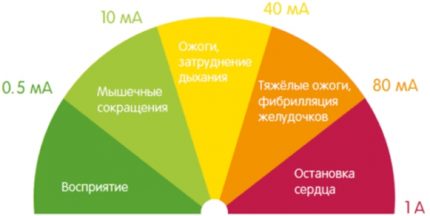
Main destination RCD - rupture of the power supply circuit of the electrical installation (its protective disconnection from the network) when a leakage current occurs. On the one hand, this protective switch prevents electric shock to a person, and on the other, it prevents overheating of the wires.
If the heating element or the cable suitable for it is suddenly damaged, then the condensate on the outside and the water inside the boiler turn into a natural conductive element, and when it comes into contact with it or with the body of a water heater, a person beats a leakage current.
As a result - discomfort, cardiac arrhythmia and a possible fatal outcome.It all depends on the strength of the acting electric current in amperes.
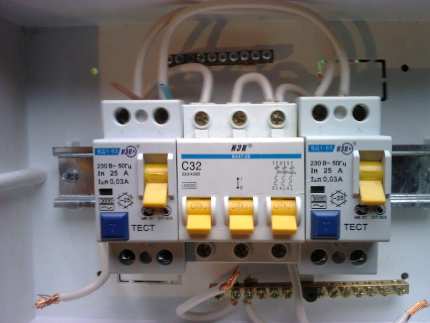
When a leakage current appears in the circuit, the wires begin to work at transcendental modes. But the core section is simply not designed for such loads. As a result, the wire begins to heat up very much, burning through the insulation. And this inevitably leads to an increased risk of fire in the house.
Thus, without an RCD, it is not recommended to connect a water heater to the mains.
The most common RCD trip situations are:
- damage to the wire and shorting the bare core to the boiler body;
- damage to the insulation layer in the tubular electric heating element;
- incorrect selection of protective device parameters;
- Incorrect connection of the water heater to the power supply;
- malfunction of the leakage current protection device itself.
In all these cases, in the absence of an RCD, touching a person to the body of the water heater or the water heated in it is fraught with serious injury.
The difference between the residual current device
It is necessary to clearly distinguish between RCD (differential switch) and diflavomat (differential automaton, residual current circuit breaker, AVDT). They have a slightly different purpose, they work fundamentally differently and their internal structure also varies.
RCD responds exclusively to leakage current. Difavtomat is a more complex device, part of which is just a residual current device. The differential circuit breaker operates not only from the current leaks described above, but also during short circuits and overloads in the electrical network.
In addition to the RCD, in the high-voltage circuit breaker there is an additional thermal and electromagnetic trip units that respond to the very ultra-high currents and short-circuit currents.
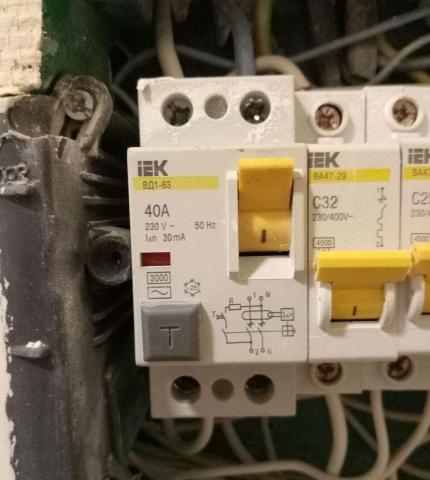
The main node of the RCD is a differential transformer with three windings (inlet, outlet and control). The electric current passing through the protective device excites magnetic fluxes with directly opposite poles on them. In the absence of leaks, when the water heater is serviceable, the sum of the currents is zero.
But in the event of breakdowns of the heating element or insulation breakdowns, if a person takes on a bare wire (or a metal boiler body), then through his body an electric current will begin to flow into the ground - as a result, the sum of the currents from zero will become positive.
Then the balance in the transformer is violated and the EMF acting on the internal relay instantly opens the circuit, an RCD trips.
Additional information on the differences between RCDs and the differential machine, as well as the choice of a switching device for disconnecting the load, is described in this article.
Types of differential switches
RCDs installed with water heaters and other electrical appliances are divided by the nature of the leakage current, operating current, the number of phases, as well as the presence / absence of delay and the technology of operation of the protection device.
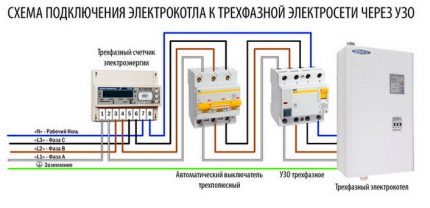
All RCD models according to the type of leakage current are divided into three types:
- "AND" - are designed to operate on an alternating and pulsating electric current;
- "AC" - inexpensive household devices that operate only on alternating current;
- "AT" - industrial options designed to work in networks with alternating, direct and rectified electric current.
If the RCD marking on the case is present "S", then this is a device with an exhibited selective response delay. He breaks the chain only after a strictly set time, and not immediately. Such devices are used in cascade protection systems with several circuits. In everyday life they are practically not used.
According to the principle of breaking an RCD, there are:
- electromechanical;
- electronic.
Electromechanical models Do not need a separate external power supply and are more reliable. However, they are more expensive than the second. But, despite the high price, it is recommended to install precisely electromechanical devices.
Electronic counterparts during power surges, the efficiency of the device decreases - in such situations, they increase the response time. Plus, with accidental damage to the zero core, such an RCD will simply cease to work without power.
How to choose a protection device
The operating current of the RCD determines the maximum permissible load in the circuit that will pass through it. It must match the capacity of the water heater.
For example, if the boiler consumes up to 2.3 kW, then the protective device should be designed for 10 A. For heaters of 5.5–7 kW, a device for 32 A is needed. But for boilers of 7–8 kW, an RCD of 40 A is required.

Leakage current is indicated in mA (milliamperes). According to electrical regulations, its calculation must be based on 0.4 mA for each ampere of working electric current. Plus, 10 μA per meter of wire to the water heater is also added.
It is not for nothing that RCDs are recommended to be placed directly next to the boiler in order to exclude the influence of the second parameter in the calculations.
The considered protective device in shape and size can be mounted on a DIN rail in a panel and in the form of a unit with a plug in a regular outlet.
There are water heater models on sale that initially come with an RCD built-in to the cable. All parameters of such protective devices have already been calculated in advance for a specific boiler, they only need to be plugged into an outlet.
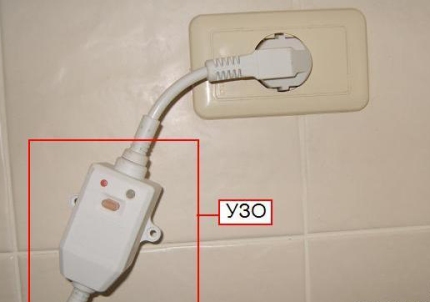
One more moment RCD selection - this is the presence of almost every electrical appliance of natural leakage current. If they are, then they are indicated in the technical passport of the water heater.
The rated parameters of the protection device must exceed these passport data at least three times, otherwise false alarms will constantly occur.
Among the best manufacturers of differential switches are:
- swiss swiss ABB;
- french Legrand and Schneider electric;
- German Siemens and Aeg;
- Russian KEAZ, IEK and Dekraft.
European manufacturers have slightly higher prices. At the same time, products of Russian companies are often not inferior to them in quality.
Schemes of connection to electric boilers
For a water heater, a current leakage protection device can be installed directly in the apartment (cottage) electrical panel or directly on the wall near the heating device.
The principle of the connection sequence is the same in both cases - a boiler, an RCD, a line circuit breaker, a meter and a general circuit breaker. At the same time, the RCD and the machine of a particular line with a socket for a water heater can be interchanged, both schemes are correct.

The domestic water heater should be connected to a separate branch from the electrical panel. And ideally, it should not have outlets and other electrical appliances.
The boiler is a rather dangerous device. It is best if the protective device works only on it. This will increase the safety of operation of the heater, and simplify the identification of problem areas in all wiring around the house.
If the RCD is installed next to the water heater, then the wire from the protective device to the machine in the shield will be without "supervision". If the insulation is damaged on it, the boiler protection device simply will not work. It will not even notice a leaking electric current.
However, boilers are often mounted in bathrooms where humidity is high. It’s good if in the electrical panel there is an additional general RCD for the whole house, although it will turn off the network. Otherwise, such a breakdown will inevitably lead to electric shock to a person who has decided to take a shower.
Possible installation errors
Error No. 1. In order for the RCD to work correctly, contacts between the "working zero" and the "ground" are not allowed in the protected circuit. Each of these wires must have its own bus. Moreover, in the connection of the protection device, “grounding” is not present at all. This conductor is not connected to it anywhere.
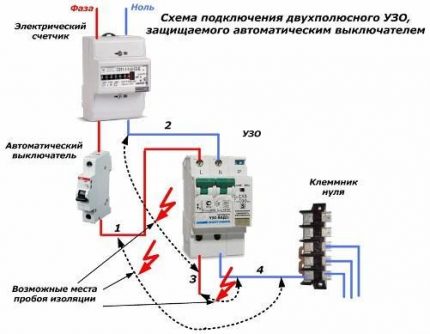
Error No. 2. The operating current of the RCD is selected the same or with a slight excess of the operating current of the machine in the circuit. The only way circuit breaker able to protect the protective device itself from overloads.
Error No. 3. Inexperienced electricians often install sockets and RCDs directly under the water heater. This is strictly not recommended.
Leaks from hot-water titanium cannot be completely ruled out, and with such a layout for sockets and other electrical appliances with bare wires under a potential “waterfall”, the tragedy is not so far away.
Error No. 4. You can not connect the water heater only through an RCD or one automatic machine. These devices complement but do not duplicate each other. They protect the boiler from fundamentally different problem situations in the electrical network.
Error No. 5. If the RCD is too sensitive (with a low leakage current), then it will unnecessarily often respond to circuit blocking. The water heater will constantly turn off. As a result, the water does not heat up normally and the boiler from continuous on / off can fail.
After completing the wiring, it is necessary check the performance of the RCD. For this, most water heaters have a “TEST” function, which simulates a leakage of current. If everything is connected correctly and the protection works, then the latter will trigger with the boiler turned off.
Otherwise, you need to look where and what does not work as it should. Moreover, such checks are recommended to be carried out once a month and subsequently.
Conclusions and useful video on the topic
There are few nuances in installing a residual current device, but they are. To make it easier for you to understand these issues and choose the right device, we have made a selection of relevant video materials. They detail the principles of operation and schemes for connecting an RCD to a network with a water heater.
Connection of protective devices in networks without grounding:
What is an RCD, why is it needed in everyday life (for example, connecting a washing machine):
It is not recommended to connect the water heater to the network without an RCD. Only a leakage protection device can protect users. There are no difficulties in installing such a device, it can be included in the power circuit independently by selecting parameters according to the electric current.
Do you have personal experience in selecting and connecting an RCD to a water heater? Want to share your knowledge or ask questions about the topic? Please leave comments and participate in discussions - the feedback form is located below.

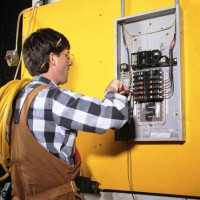 How to connect an RCD: circuits, connection options, safety rules
How to connect an RCD: circuits, connection options, safety rules 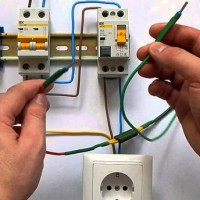 Rules for connecting an RCD to a single-phase network without grounding: the best schemes + operating procedure
Rules for connecting an RCD to a single-phase network without grounding: the best schemes + operating procedure 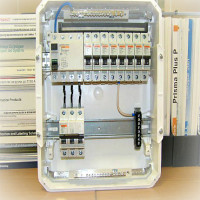 Features of connecting automatic machines and RCDs in the shield: circuits + installation rules
Features of connecting automatic machines and RCDs in the shield: circuits + installation rules 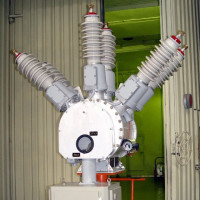 Gas-insulated switches: reference points and connection rules
Gas-insulated switches: reference points and connection rules 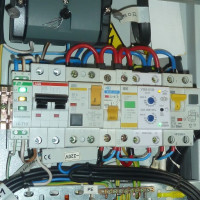 Fire RCD: selection recommendations, rules and installation diagrams
Fire RCD: selection recommendations, rules and installation diagrams 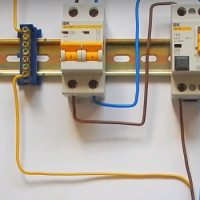 How to connect a differential machine: possible connection schemes + step-by-step instructions
How to connect a differential machine: possible connection schemes + step-by-step instructions  How much does it cost to connect gas to a private house: the price of organizing gas supply
How much does it cost to connect gas to a private house: the price of organizing gas supply  The best washing machines with dryer: model rating and customer tips
The best washing machines with dryer: model rating and customer tips  What is the color temperature of light and the nuances of choosing the temperature of the lamps to suit your needs
What is the color temperature of light and the nuances of choosing the temperature of the lamps to suit your needs  Replacement of a geyser in an apartment: replacement paperwork + basic norms and requirements
Replacement of a geyser in an apartment: replacement paperwork + basic norms and requirements